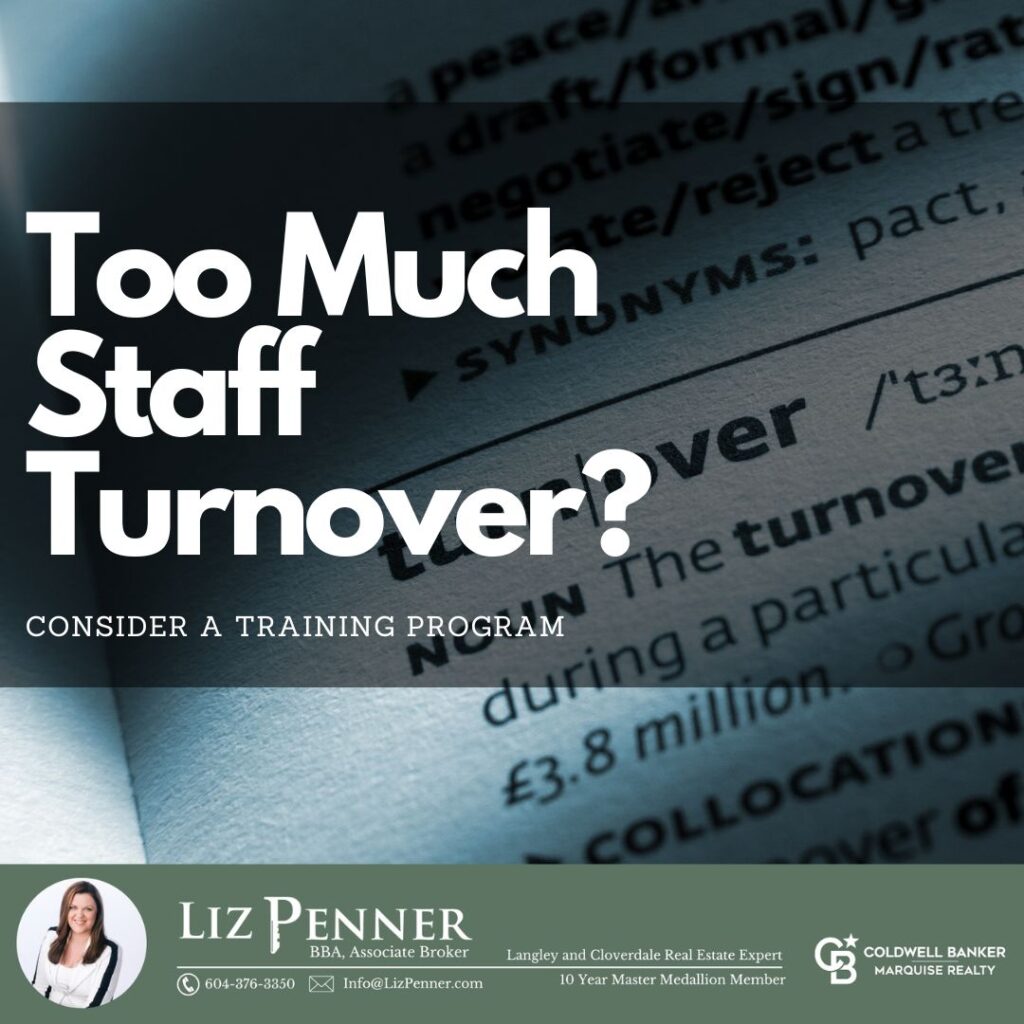
Too Much Staff Turnover? Consider a Training Program!
I hold a BBA in Leadership and I’m studying for an MBA in change management. This area of study focuses on the social and financial dynamics of organizational culture. Turnover is well-studied in this field and an area of interest of mine.
Staff turnover is a significant problem. It’s disruptive to operations, expensive, and it lowers staff morale. Even worse, it’s contagious. Ever notice that once a few people start quitting, it catches on? This is called turnover contagion, a phenomenon that starts with a few turnovers and then becomes the norm. Visible departures signal to other employees that things are bad and aren’t getting better.
But what happens when employees start rapidly leaving? For starters, it erodes the bottom line. For highly skilled and technical employees, it costs an average of 3-6 months’ wages in training and recruitment expenses. Imagine an organization that should be experiencing a 10-15% turnover rate but is instead experiencing a 60% turnover rate. That’s 45% above optimal and accounts for an additional 16.87% in annual staffing costs. (This figure is derived by estimating that it takes 4.5 months of wages to recruit and train someone, representing 37.5% of one’s annual salary, and multiplying this by the residual staff turnover ratio of 45%). Now imagine the organization has an average salary of $80,000 annually over 100 employees. This would create an annual staffing budget of $8,000,000, with the organization running $1,349,600 over budget.
Now let’s relate this to the real estate industry. The average real estate brokerage runs a 10-20% profit margin on a good day. If the brokerage runs a profit margin of 20%, they’d have to earn $6,748,000 more to make up for the cost overage. If the profit margin is 10%, they’d have to earn an eye-watering $13,496,000 to offset the spending caused by excess turnover.
It’s easy to make a business case for reducing employee turnover. Even without the numbers, it’s widely agreed that organizations don’t want high turnover. Yet it is a common and persistent problem in the real estate industry. Here’s why: Real estate requires employees with high degrees of technical skills to work collaboratively on complex projects in rapidly changing environments. Organizations often assume that those with high technical skills also possess strong interpersonal skills.
However, technical skills and interpersonal skills are distinct and unrelated. In fact, one could argue the opposite. Those who value education and personal development might not spend a lot of time socializing, meaning that your staff might be able to perform complex math calculations while lacking knowledge of basic social interactions.
This leads to a situation where an organization places people with vastly different skills together, resulting in conflicts and subsequent quitting.
This creates a complex and expensive problem with a simple and cost-effective solution: teaching employees how to get along. This doesn’t mean advanced-level skills; rather, it involves basic skills. Employees need to learn how to communicate when their feelings are hurt, when they are hungry, and when they feel sick. This can be achieved through seminar series where employees are trained on how to have difficult conversations in the workplace.
If an organization has 100 employees at an average annual cost of $8,000,000, then the average wage is $38 per hour. If the organization requires employees to attend one hour per week of interpersonal training, they’ll incur an average cost of $1,900 per employee per year, or $190,000 annually for all staff. This is significantly cheaper than the $1,349,600 cost to an organization and much easier than having to earn $13,496,000 more dollars to make up for the expense.


